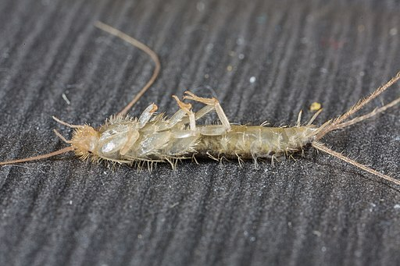
Did you know that the silverfish has existed for over 420 million years? This small, wingless insect may seem like a modern discovery but their history reaches long back into time.
They are relatively harmless, though if there is a large amount of them infesting your property, it can become a problem. They typically only live one to two years and survive by eating decaying material, paper, and fabrics.
Silverfish are also more active at night. If they are present in your home, here are silverfish infestation signs to look out for.
1. Shed Exoskeletons
During their life cycle, silverfish shed their exoskeletons several times. The fact that they left behind these exoskeletons shows that they were there. They look like tiny, clear copies of real silverfish and can be found in dark places, closets, and bookshelves, where silverfish like to hang out.
Keep an eye out for these small exoskeletons that are thin and slightly bent. If you find these in your home, you might have a silverfish infestation and need to get silverfish pest control to keep them from coming back. Websites like getpestremedy.com can be helpful if you want to find natural repellents or get help from a professional.
2. Yellow Stains and Holes
Yellow stains and stones are also clear silverfish infestation signs. When silverfish eat paper, books, or wallpaper, they leave behind tiny bits of waste called "frass." Frass is made up of waste and pieces of food that they haven't processed yet.
Frass that builds up on surfaces over time can leave yellow spots that are easy to see. These stains can show up on book pages, paper stacks, wallpaper, or any other object they have been eating.
Small, irregular holes or notches in books, papers, and fabrics are another clear sign of a silverfish
. Silverfish chew on these things to get the nutrients they need, and as they do, they make tiny holes. At first, the holes may be hard to see, especially in paper and cloth, but as time goes on and the silverfish keeps eating, the damage becomes more clear.
3. Droppings
Finding droppings is a clear indication that silverfish have been active in your home. Silverfish droppings are small, granular, and typically dark in color.
They resemble tiny black pepper or coffee grounds and are usually about the size of a grain of sand or smaller. Because silverfish are relatively small insects, their droppings are proportionally tiny and may go unnoticed if you're not actively looking for them.
Silverfish droppings are usually found near their hiding places or feeding areas. As nocturnal creatures, silverfish tend to be active at night, so you're likely to discover their droppings in places they frequent, such as dark corners, closets, bookshelves, and areas with stored papers or fabrics.
Keep a Lookout for These Silverfish Infestation Signs
Subtle silverfish infestation signs should be taken seriously. While they may take some time to manifest, if left unchecked these signs can quickly spiral into infestations that are hardly recognizable.
Act quickly and consult a professional for treatment to avoid a larger infestation down the road. Contact an exterminator today to get help with silverfish removal.
Is this article helpful? Keep reading our blog for more.
Here are Some Other Articles Related to Your Search:
Spring cleaning tips that will protect your home from a pest infestation
Common Pests in Southern California and How to Control Them
Common Kind Of Pests And Tips To Control Them


(0) comments
We welcome your comments
Log In
Post a comment as Guest
Keep it Clean. Please avoid obscene, vulgar, lewd, racist or sexually-oriented language.
PLEASE TURN OFF YOUR CAPS LOCK.
Don't Threaten. Threats of harming another person will not be tolerated.
Be Truthful. Don't knowingly lie about anyone or anything.
Be Nice. No racism, sexism or any sort of -ism that is degrading to another person.
Be Proactive. Use the 'Report' link on each comment to let us know of abusive posts.
Share with Us. We'd love to hear eyewitness accounts, the history behind an article.